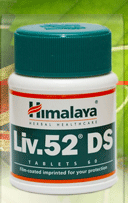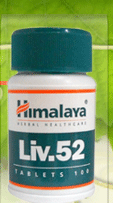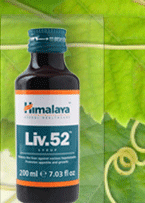 |
 |
 |
 |
|
|||||||
|
|
|
||||||||||
|
|
|
|
|
|
|
|
|
||||
|
|
|
||||||||||
 |
 |
 |
|
||||||||
Liv 52 - IngredientsHimsra (Capparis spinosa)A prostrate shrub or climber armed with divaricate, light yellow thorns. The root bark contains stachydrine, rutic acid and a volatile substance. It is bitter, aperient, diuretic and expectorant. It is given in splenic, renal and hepatic complaints. he caper (Capparis spinosa L.) is a perennial spiny bush that bears rounded, fleshy leaves and big white to pinkish-white flowers. A caper is also the pickled bud of this plant. The bush is native to the Mediterranean region, growing wild on walls or in rocky coastal areas throughout. The plant is best known for the edible bud and fruit (caper berry) which are usually consumed pickled. Other species of Capparis are also picked along with C. spinosa for their buds or fruits. Kasani / Cichorium intybus / ChicoryCommon chicory (Cichorium intybus) also known as blue sailors, is a bushy perennial herb with blue, lavender, or white flowers. Chicory is widely seen in Europe, North America and Australia. Cichorium intybus is an erect perennial herb. Chicory root contains tannin phlobaphenes and reducing sugars. Chicory seeds have carminative and cordial properties and are useful as a brain tonic and for headache, asthma and bilious vomiting. Chicory is an acclaimed hepatoprotective, and, used in hepatic enlargement, fever, vomiting and abdominal pain. Chicory has cholagogue and anti-inflammatory properties. Chicory has great value for its tonic affect upon the liver and digestive tract. The root and the leaves are appetizer, cholagogue, depurative, digestive, diuretic, hypoglycaemic, laxative and tonic. The root extracts have experimentally produced a slower and weaker heart rate]. The plant merits research for use in heart irregularities[222]. The plant is used in Bach flower remedies - the keywords for prescribing it are 'Possessiveness', 'Self-love' and 'Self-pity'[209]. The latex in the stems is applied to warts in order to destroy them[218]. Chicory contains vitamins B, C, K and P. Pliny talks of using Chicory juice with rose oil and vinegar for headaches. In Roman times it was used as a vegetable. Juice can also be drunk with wine to treat liver and bladder problems. The plant can also be used in remedies for gallstones. The root is used as a coffee substitute. The ancient Egyptians believed the plant could purify the blood and liver. Leaves can be used as compresses for skin inflammation. The plant supports the body's ability to absorb calcium. In folklore, Chicory flowers are the eyes of a girl crying for her sweetheart's ship, which never returned. Chicory can also make you invisible (!) and could unlock boxes if a leaf of it was held against the lock. It had to be collected on 25 July (St James' Day) and cut with a knife of gold in silence, or the collector would die. German legend tells of a girl waiting by the roadside for her lover, who never came. She fell exhausted on to a patch of Chicory and died - hence it is also known as Watcher of the Road. A similar legend tells of a girl who fell in love with a sailor who left her to go to sea. She was distraught and the gods took pity on her and turned her into Chicory - hence another name for the plant - Blue Sailor Weed. Leaves can be boiled to produce a blue dye. As with other violet-coloured flowers, Chicory flowers made a sweet known as Violet Plates in Tudor times. The seventeenth century alchemist, Paracelsus, claimed that, after 7 years, Chicory turned into a bird! Plant in spring or autumn, in rich, well-drained soil in sun. Cut back plant in autumn. CAUTION - IF USED TO EXCESS in MEDICINE IT MAY CAUSE LOSS OF RETINAL VISUAL POWER. Mandur bhasmaSanskrit / Indian Name : Mandur bhasma English Name : Ferric Oxide Calx Mandur bhasma an ayurvedic preparation of iron is used in traditional medicine against hepatitis. In the present study the hepatoprotective property of this drug was tested in albino rats during CCl4 induced hepatic injury. The effect of mandur bhasma on the activities of the lipolytic enzymes of rat liver, kidney and adipose tissue were studied during hepatitis induced by CCI4. The activities of acid lipase, alkaline lipase, lipoprotein lipase and hormone sensitive lipase exhibited significant alterations during CCl4 induced hepatic injury, indicating a role for these enzymes in the mobilization of fat from adipose tissue and accumulation of fat in liver and kidney. Simultaneous treatment with mandur bhasma prevented the paraffin mediated and CCl4 mediated changes in the enzyme activities. These results suggest the hepatoprotective role of mandur bhasma during CCl4 induced hepatic injury. Mandur bhasma found most effective in liver disorders. Corrects anaemia, jaundice, piles, oedema associated with liver disorders. Indicated in general debility, sexual debility, enlargement of spleen. Medicine of choice for growing children & pregnant women. Preferred as an haematinic. It is prepared by purifying and calcinating iron rust. Mandura is specially useful in anemia, amenorrhoea, dysmenorrhea, menorrhagia, chlorosis, hepatic and splenic disorders. It is also used in diarrhea, chronic bowel complaints, dyspepsia, intestinal worms, nervous diseases, neuralgia of the 5th nerve due to debility, kidney diseases, albuminuria, etc. It is a powerful hematinic and tonic and is valuable in the treatment of hemolytic jaundice and microcytic anemia. Kakamachi / Black Nightshade / Solanum nigrumThe Black nightshade is a fairly common plant a member of the Solanaceae family, found in many wooded areas, as well as disturbed habitats. It rarely grows more than a foot or so in height and is much branched, generally making a bushy-looking mass. The Active ingredient is Solania, discovered in 1821 by M. Desfosses. The Black Nightshade is an annual plant, common and generally distributed in the South of England, less abundant in the North and somewhat infrequent in Scotland. It is one of the most cosmopolitan of wild plants, extending almost over the whole globe. The Black Nightshade plant is effective in the treatment of cirrhosis of the liver. The plant is also credited with emollient, diuretic, antiseptic and laxative properties. The plant and its berries contain various alkaloids support a healthy liver, skin, kidneys and bladder. It is also shown to have a dilating effect on the pupil. In ayurveda the black nightshade with other ingredients are used for heart disease. The berries of black nightshade plant could be eaten without danger. 1 or 2 grains of the dried leaves, infused in boiling water, act as a strong sudorific. A Small dosage of this is useful in cutaneous disorders. The black nightshade plant is used in gastritis treatments, enlargement of glands, inflammations of mucous membranes, herpes, and as a narcotic. The bruised leaves of the black nightshade plants used to treat burns, ulcers, skin diseases, scrofulous and cancerous affections. The juice of this plant is used for ringworm, gout and earache, and mixed with vinegar, is said to be good as a gargle and mouthwash. Arjuna (Terminalia arjuna )Terminalia arjuna is an Ayurvedic cardioprotective botanical medicinal plant being used in Ayurveda since 2500 B.C, widely used by Ayurvedic physicians for its curative properties in organic/functional heart problems including angina, hypertension and deposits in arteries. It is also useful in the treatment of any sort of pain due a fall, ecchymosis, spermatorrhoea and sexually transmitted diseases such as gonorrhoea. Arjuna bark (Terminallia arjuna) helps to maintain a healthy heart. Arjuna improves pumping activity and the strength of the cardiac muscles. Arjuna tree is rich in Co-enzyme Q-10 which are highly recommended for prevent incident of heart attacks. Powdered extract of Terminalia arjuna provided very good results to the people suffering from Coronary heart diseases. Arjuna has been used to support cardiovascular functions, it has cardio-protective benefits, it helps in relieving mental stress and nervousness, and it also has a tonic effect in cases of cirrhosis of the liver. Terminalia is useful in alleviating the pain of angina pectoris and in treating heart failure and coronary artery disease. Terminalia is also useful in treating hypercholesterolemia. In addition to the cardiac effects, Terminalia may also be protective against gastric ulcers, caused by NSAIDs Chemical ingredients in arjuna are : Arjunetosides I, Arjunetosides I, Arjunetosides II, Arjunetosides III, Arjunetosides IV, Arjunine, Arjunetein, Saponnins, Arjunone, Arjunolone, Leteilin, Gallic acid, Ellagic acid, Oligomeric proanthocyanidins (OPCs), Phytosterols, Tannins, arjunic acid, arjunolic acid, arjungenin, arjunglycosides, Phytosterols (b-sitosterol), Minerals like calcium, magnesium, zinc, and copper are also present. Health benefits of Arjuna are : Hypo lipedimia, Hyper lipidemia, Hypercholesterolemia, Blood pressure, Reduces stress, Liver tonic, Urinary tract toner, Cardio modulator Effects of Arjuna in human body Arjuna, is one of the best blood coagulants. Arjuna is one of the most powerful herbal supplements known for its healing powers. Arjuna is beneficial in maintaining proper condition in our digestive tract. It is very helpful in treating up of the diarrhea and dysenteric condition in the body Arjuna regulates the peristaltic movements in the body and does not allow dehydration leading to loose stools, It is also helpful for bleeding piles. Arjuna is useful in improving liver conditions like cirrhosis of liver. Arjuna prevents the accumulation of Mucus. Arjuna is useful in expelling out the extra mucus that somehow gets accumulated in the respiratory tract. Arjuna is useful for any lungs infections. Arjuna increases the lung capacity. Arjuna is one of the best cardio protector agent. Arjuna is effective in nurturing heart muscles, helps for proper contraction and relaxation. Arjuna maintains a proper heart beat. Arjuna Increases the blood density Arjuna possesses coenzyme Q 10. Coenzyme Q10 is useful for preventing heart attacks. Arjuna provides strength to the nervous system and also strengthens the reflexes. Arjuna helps in thickening of the serum and the sperm which helps proper fertilization of the ovum. Arjuna increases the sperm count and also helpful in increasing the over all stamina of the body Arjuna regulates the hormonal system of the body. It is helpful in maintaining proper stimulation of endocrine glands. Arjuna regularizes the increased urine frequency, Arjuna removes any infection in the body. Arjuna is good for skin problems like eczema, itching, rashes scars and serious skin conditions like psoriasis can also be treated with the regular use of Arjuna. Side Effects of Arjuna :- Arjuna has no side effects in what so ever. For precautionary reasons children below 12 years of age and pregnant women should consume Arjuna only under medical supervision. Kasamarda,- Negro Coffee (Cassia occidentalis)Negro Coffee has been traditionally used to promote normal bowel movements. It is a cousin species of Senna, a known and stronger purgative. Despite its name (which comes from its occasional use as a coffee substitute), Negro Coffee is absolutely unrelated to coffee. The plant is bitter, purgative, laxative, anti-inflammatory, expectorant, hepatoprotective, anti-malarial, analgesic, vermifuge and febrifuge. It mainly used to detoxify liver, use to cure internal bacterial and fungal disorders, to kill parasites and viruses, enhances immunity, and promotes perspiration. It is also helpful in cough, convulsions, reduces blood pressure, reduces spasms and as cardiotonic. Seeds are brewed into a coffee-like beverage for asthma, and a flower infusion is used for bronchitis. Leaves are used in the treatment of gonorrhea, fevers, urinary tract disorders and edema. The seed is bitter and has purgative properties; it is also used as a diuretic, liver detoxifier, as a hepato-tonic (balances and strengthens the liver). Further, used in whooping cough and convulsion. In Suriname's traditional medicine, coffee senna is used against throat inflammation, colds, asthma, fever and flu, also used against poisonous snake bites. It is an excellent remedy for fungus - and bacterial infections. An undershrub grows up to 2 meters in height. Leaves pinnately compound, paripinnate, with 3-5 pairs; flowers yellow, in short pedunculated racemes. Fruits compressed, 8-12 cm long, containing 10-30 ovoid, compressed and grayish brown seeds. MEDICINAL PROPERTIES Plant pacifies vitiated vata, kapha, cough, bronchitis, allergy, asthma, fever constipation, diabetes, skin diseases, wounds and ulcers. Useful part : Root, Seeds, Leaves. Found throughout India up to an altitude of 1,500 m. C.occidentalis is an erect, annual herb or undershrub. The leaves are lanceolate or ovate-lanceolate, the leaflets, 3-paired, membranous, glaucous, ovate or lanceolate; the flowers, yellow, in short racemes; the pods, recurved, glabrous and compressed; the seeds, dark olive green, ovoid, compressed, hard, smooth and shining. The seeds yield an oil. They also contain 1, 8-dihydroxy-2- methylanthraquinone, 1, 4, 5-trihydroxy-7-methoxy-3- methylanthraquinone, physcion, its glucoside, rhein, aloe-emodin, chrysophanol, its glycoside, N-methylmorpholine, glucosides of campesterol and ß-sitosterol, and a galactomannan1. Biranjasipha ( Achillea millefolium )Negro Coffee has been traditionally used to promote normal bowel movements. It is a cousin species of Senna, a known and stronger purgative. Despite its name (which comes from its occasional use as a coffee substitute), Negro Coffee is absolutely unrelated to coffee. The plant is bitter, purgative, laxative, anti-inflammatory, expectorant, hepatoprotective, anti-malarial, analgesic, vermifuge and febrifuge. It mainly used to detoxify liver, use to cure internal bacterial and fungal disorders, to kill parasites and viruses, enhances immunity, and promotes perspiration. It is also helpful in cough, convulsions, reduces blood pressure, reduces spasms and as cardiotonic. Seeds are brewed into a coffee-like beverage for asthma, and a flower infusion is used for bronchitis. Leaves are used in the treatment of gonorrhea, fevers, urinary tract disorders and edema. The seed is bitter and has purgative properties; it is also used as a diuretic, liver detoxifier, as a hepato-tonic (balances and strengthens the liver). Further, used in whooping cough and convulsion. In Suriname's traditional medicine, coffee senna is used against throat inflammation, colds, asthma, fever and flu, also used against poisonous snake bites. It is an excellent remedy for fungus - and bacterial infections. An undershrub grows up to 2 meters in height. Leaves pinnately compound, paripinnate, with 3-5 pairs; flowers yellow, in short pedunculated racemes. Fruits MEDICINAL PROPERTIES Plant pacifies vitiated vata, kapha, cough, bronchitis, allergy, asthma, fever constipation, diabetes, skin diseases, wounds and ulcers. Useful part : Root, Seeds, Leaves. Found throughout India up to an altitude of 1,500 m. C.occidentalis is an erect, annual herb or undershrub. The leaves are lanceolate or ovate-lanceolate, the leaflets, 3-paired, membranous, glaucous, ovate or lanceolate; the flowers, yellow, in short racemes; the pods, recurved, glabrous and compressed; the seeds, dark olive green, ovoid, compressed, hard, smooth and shining. The seeds yield an oil. They also contain 1, 8-dihydroxy-2- methylanthraquinone, 1, 4, 5-trihydroxy-7-methoxy-3- methylanthraquinone, physcion, its glucoside, rhein, aloe-emodin, chrysophanol, its glycoside, N-methylmorpholine, glucosides of campesterol and ß-sitosterol, and a galactomannan1. Jhavuka (Tamarix gallica)Latin Name : Tamarix gallica English Name : Tamarisk Sanskrit / Indian Name : Jhavuka Tamarix gallicaTamarix gallica is a gregarious bushy shrub that grows on saline or waterlogged soils or a small tree with pendulous branches when grown on better soils. A decidious shrub growing to 4m by 6m at a medium rate. It is in flower from June to August. The flowers are hermaphrodite (have both male and female organs) and are pollinated by Bees. It is noted for attracting wildlife. The plant prefers light (sandy), medium (loamy) and heavy (clay) soils, requires well-drained soil and can grow in heavy clay soil. The plant prefers acid, neutral and basic (alkaline) soils and can grow in very alkaline and saline soils. It cannot grow in the shade. It requires dry or moist soil. The plant can tolerate maritime exposure. Tamarisk, sometimes referred to as Saltcedar, has been traditionally used as a tonic and diuretic. It contains an alkaloid, Tamarixin, that has been linked to its effectiveness in conditions associated with hepatic insufficiency. There are indications that Tamarisk is also helpful in increasing platelet counts. The branchlets and the leaves are astringent and diuretic. An external compress is applied to wounds to stop the bleeding.The manna produced on the plant is detergent, expectorant and laxative. Galls produced on the plant as a result of insect damage are astringent. They are used in the treatment of diarrhoea and dysentery. Its principal constituents are tamarixin along with traces of its aglocone, tamarixetin. It is used in bleeding disorders like menorrhagia, bleeding in the rectum and epistaxis. It is used in disorders associated with hepatic insufficiency Manna.A manna is produced by the plants in response to insect damage to the stems. It is sweet and mucilaginous. There is some confusion over whether the manna is produced by the plant, or whether it is an exudation from the insects. The insects in question live in the deserts around Israel, it is not known if the manna can be produced in Britain. Medicinal Uses Astringent; Detergent; Diuretic; Expectorant; Laxative. The branchlets and the leaves are astringent and diuretic. An external compress is applied to wounds to stop the bleeding. The manna produced on the plant is detergent, expectorant and laxative. Galls produced on the plant as a result of insect damage are astringent. They are used in the treatment of diarrhoea and dysentery. The plant contains a high level of tannin. Galls produced on the plant as a result of insect damage contain up to 40% tannin. The tannin can be used as a dyestuff for fabrics. (No details are given about the colour, though it is likely to be some shade of brown.) |
|
||||||||||


|
|
||||||||||
 Home Home
The Products  Liv 52 Range Liv 52 Range
 Liv 52 Regular Strength Liv 52 Regular Strength
 Liv 52 Double Strength Liv 52 Double Strength
 Liv 52 Drops Liv 52 Drops
 Liv 52 HB Liv 52 HBDeals  Combination Deals Combination Deals
 Bodybuilder Deals Bodybuilder Deals
 Wholesale Wholesale
Product Information  Liv 52 FAQ Liv 52 FAQ
 Liv 52 How It works Liv 52 How It works
 Liv 52 Ingredients Liv 52 Ingredients
 Liv 52 Dosage Liv 52 Dosage
 Liv 52 Vs Milk Thistle Liv 52 Vs Milk Thistle
 Liv 52 Research Papers Liv 52 Research Papers
 Shipping & Returns Shipping & Returns
 Terms & Conditions Terms & Conditions
 Privacy Policy Privacy Policy
 About Us About Us
 Contact Us Contact Us
 Disclaimer Disclaimer
|
|
||||||||||
|
|
|
|
|
|
|
|
|
|
|
|
|
© 2012 Liv-52.co.uk